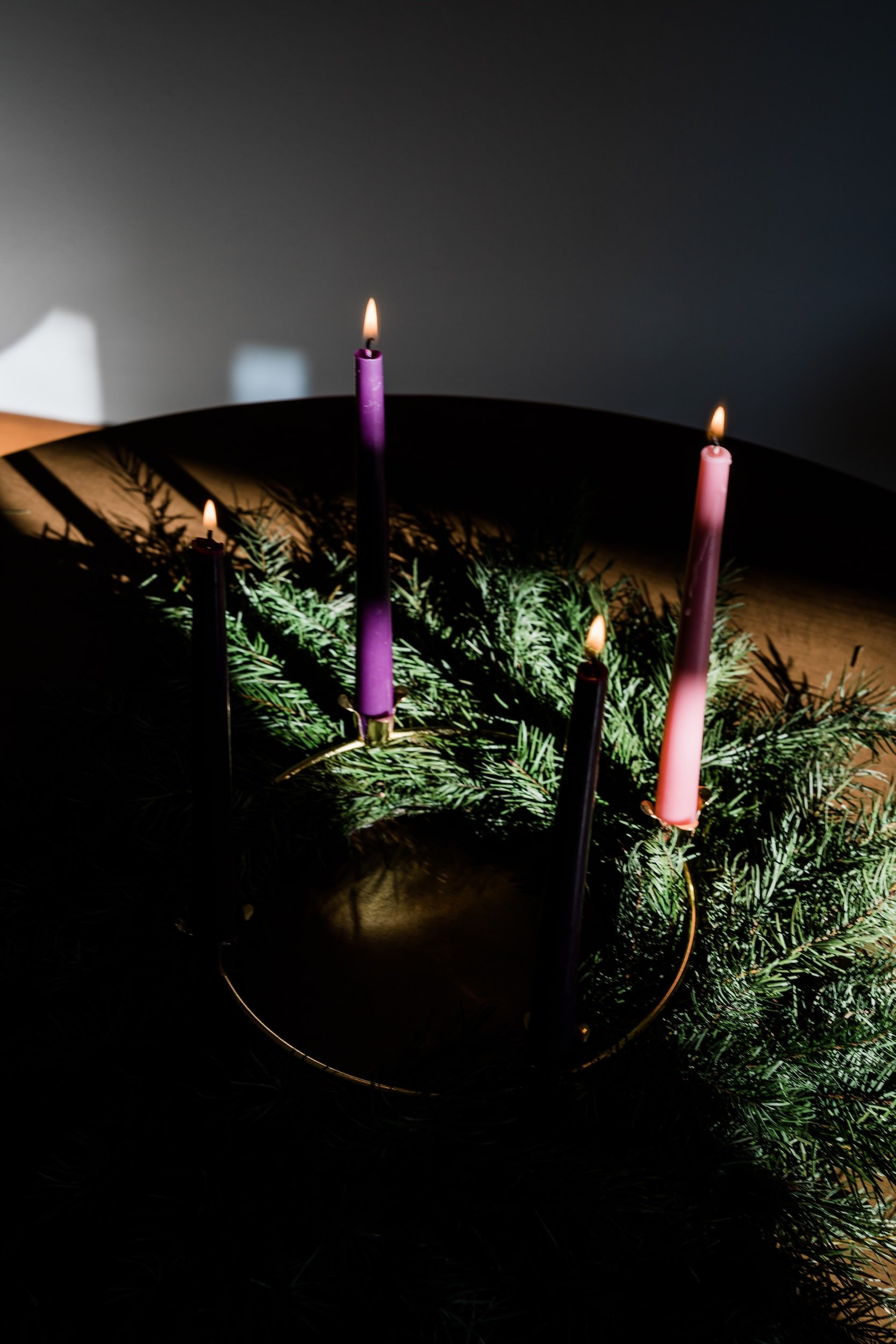Advent: Preparing Our Hearts for Christmas
My brother-in-law is the kind of person who, the minute we get up from the Thanksgiving dinner table, puts the Christmas music on. It’s as if it’s all he’s been thinking about through the whole meal, just waiting for that moment when he can put on the Christmas albums by Bing Crosby, Mariah Carey, or N*Sync, and then, for the next 5 weeks, he goes hard. He’s been counting down the days until this time. It’s unbridled Christmas joy. And then, like a kid who crashes after a bit too much Christmas candy, it’s over. December 26th comes and he’s done. No more Christmas music or sweaters. He’s making plans for when to take down the tree.
Does this sound familiar? Is this you? If so, no judgement; no shame! I wouldn’t want to steal your joy for a moment. That certainly used to be me. Just a few years ago, it was all I could do to not start playing Christmas music on November 1. Forget Thanksgiving. I wanted two full months of dashing sleighs and jingling bells. But then I was introduced to the Great Tradition and the rhythms of the ancient Church Calendar. I learned for the first time that Advent is a liturgical season of its own, and not just a synonym for nativity or Christmas. I began to learn that there are specific hymns and songs written just for this season (O Come, O Come Emmanuel, Come Thou Long Expected Jesus), with their own beauty, often mingled with dissonant themes of joy and sadness, waiting and expectation.
In fact, Advent is often referred to as the season of Bright Sadness. Bright, because we who have already come to be enfolded into the Community of Christ know well the joy for which we wait. Sadness, because we join with those throughout history who looked not only to the nativity of the Messiah, but with those also who await his promised return.
The Advent season brings with it a number of liturgical changes. As a result, both aesthetically and structurally, our Sunday service will look different. Below, you will find a bit of explanation of some of these changes and some of what you can expect for the next 5 weeks.
Purple everywhere: The liturgical color for Advent (and all penitential seasons) is purple. We will adorn the hallway and the nave in purple hangings and clergy will wear purple vestments. The colors of the candles around the Advent Wreath are also primarily purple (with the exception of the rose colored candle for Gaudete [Latin for ‘rejoice’] Sunday, the third Sunday of Advent). Traditionally, purple symbolized penitence and sorrow.
Ad Orientem: a latin term meaning, “facing east;” traditionally Church spaces face east (as ours conveniently does). In this way, the congregation faces the direction of the rising sun (which symbolizes awaiting the second coming of Christ). During penitential seasons, like Advent, the priest will face east with the people rather than facing the people (referred to as ad populum).
Penitence, (you keep using that word): penitence comes from the same word from which we get ‘repentance.’ It means to show sorrow and regret for having done wrong. Advent and Lent are penitential seasons, wherein we focus on our need for repentance. The Book of Common Prayer has instructions for a penitential order of service, which moves confession right up to the beginning and affords us the opportunity to pay special attention to our need for mercy in the face of our sins. Our order of service for Advent will be as follows -
Welcome + Opening Response
Procession + Lighting of the Advent Candle
The Acclamation
The Collect for Purity
[Lord be with you]
The Collect of the Day
The Summary of the Law
Trisagion led by Music team
The Confession and Absolution + [Comfortable Words]
Passing of the Peace
Song led by Children’s Choir
Prayer for Our Children
Reading of Scripture
Almsgiving: The Church has always been known for practicing almsgiving (financially giving to those in need), and we always have a special donation box on the prayer table for this very purpose (and anyone can give to the benevolence fund by annotating a payment at any time), but during penitential seasons, we focus especially on generosity and giving to our Missions Partners through what we call The Abundance Offering. We encourage you to pray intentionally in this season about how God might be calling you to give. If you’d like to hear more about our MAP partners, check out the MAP page on our website.
Psalms: During the season of Advent, Francis and the choir are going to be leading us in singing the Psalms. As you know, the Psalms were originally written to be sung, and have been traditionally sung for thousands of years. This year, during Advent, we are going to join this tradition.
Hymns and Spiritual Songs: You will notice our catalogue of songs sung during Advent will include songs about expectation, longing, waiting, and hope. These are themes which will be riffed on a lot during Advent. We join with the historic people of God in repenting for our sin, crying out for mercy, acknowledging that the world is not as it should be, and awaiting the [second] coming of God’s Anointed Messiah, our Savior, Jesus Christ.
So whether you’re waiting until December 25 to start playing Away in a Manger and Silent Night (Christmas is a 12-day feast which begins on December 25), or if you’re already getting your Christmas playlists ready to lull you to sleep in your turkey-induced coma, be sure to be preparing your heart to wait together in the expectant hope that Advent calls us into, this season of bright sadness.
Oh, and if you’re looking for a playlist, we’ve got a great Advent playlist on Spotify.
Peace,
John Trammell+

